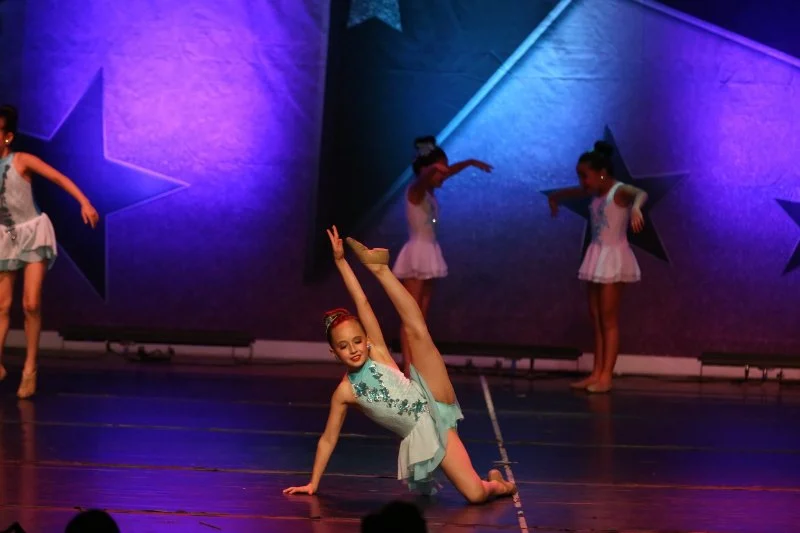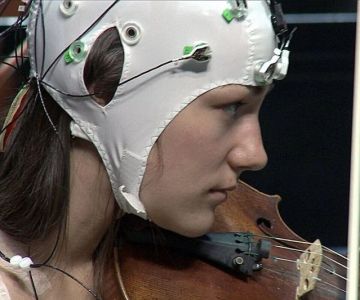
- 1. Understanding Dance Plateaus and Frustration
- 2. Why Do Dance Plateaus Happen?
- 3. How to Break Through Dance Plateaus
- 4. Maintaining Motivation During Plateaus
- 5. The Importance of Mental and Physical Rest
- 6. Personal Stories of Overcoming Frustration in Dance
1. Understanding Dance Plateaus and Frustration
Every dancer, whether a beginner or advanced, will eventually experience a plateau in their progress. Plateaus are moments when it feels like you've stopped improving, despite putting in consistent effort and practice. These periods can be incredibly frustrating, leaving dancers questioning their skills and abilities. However, understanding that plateaus are a natural part of the dance journey is key to overcoming them.
Frustration often accompanies plateaus, especially when dancers feel like they are stuck in a routine. During these times, it's crucial to approach your dance training with patience and a positive mindset, knowing that progress can be incremental and will require persistence.

The Dance Connection / the dance connection
WaterfordCamden CountyNew Jersey
386 White Horse Pike, Atco, NJ 08004, USA
2. Why Do Dance Plateaus Happen?
There are several reasons why plateaus occur in dance. Understanding these reasons can help you recognize that plateaus are not signs of failure, but rather, an opportunity for growth and change.

Adagio Dance Academy / adagio dance
LancasterLancaster CountyPennsylvania
1383 Arcadia Rd, Lancaster, PA 17601, USA
2.1 Reaching a Skill Ceiling
One common cause of plateaus is when a dancer reaches a skill ceiling. This happens when you’ve mastered the basics and are working towards more advanced techniques, but your body needs more time to adapt. Your muscle memory, flexibility, and coordination must evolve to handle these higher-level movements, which can cause a temporary slowdown in progress.
2.2 Mental Fatigue
Another cause of plateaus is mental fatigue. If you’ve been practicing intensely without taking breaks or without mixing up your routine, your mind can become drained. This can lead to frustration and a sense of stagnation, even though you’re putting in the effort. Mental fatigue often makes it harder to focus, resulting in slower progress.
2.3 Lack of Variety in Practice
Doing the same exercises and routines without variation can cause a plateau. If you’re constantly practicing the same moves or routines without challenging yourself in new ways, your body will adapt, and improvements will slow down. Growth requires diversity in practice, whether it’s through learning new styles, techniques, or performing at higher intensities.
3. How to Break Through Dance Plateaus
Plateaus don’t have to be permanent, and there are several strategies to help you break through them. With the right approach, you can reignite your progress and rediscover the joy of dancing.
3.1 Set Small, Achievable Goals
One effective strategy to break through a plateau is setting small, achievable goals. Instead of focusing on the bigger picture of overall improvement, break it down into smaller, more manageable targets. For example, focus on perfecting a particular move or mastering a specific technique. Small wins will boost your motivation and help you see progress in tangible ways.
3.2 Change Your Routine
Variety is key when you feel stuck. Change up your practice routine by adding new moves, styles, or exercises. Attend different dance classes, work with different instructors, or try a new genre of dance. New challenges will help stimulate your body and mind, making your practice more exciting and rewarding.
3.3 Focus on Technique, Not Speed
During a plateau, it’s easy to become obsessed with speed and trying to "move on" to more complex material. However, focusing on refining your technique rather than rushing through routines can help you break through the barrier. Pay attention to the small details of your movements—how your body aligns, your posture, and your timing. Perfecting the basics will often lead to breakthrough moments.
4. Maintaining Motivation During Plateaus
Plateaus are not only challenging physically but mentally as well. Maintaining motivation during these times is essential to pushing through. Here are a few ways to stay motivated:
4.1 Celebrate Small Achievements
During a plateau, progress may feel slow, but it’s important to celebrate small milestones. Did you finally nail a difficult movement? Did you improve your flexibility? These small victories matter and should be recognized as they indicate that you are still progressing, even if it feels like you’re not moving forward in leaps and bounds.
4.2 Find a Dance Community
Surround yourself with other dancers who are experiencing the same frustrations. A supportive dance community can provide encouragement, motivation, and accountability. Sharing your struggles and celebrating each other’s progress can make the plateau feel less isolating and more manageable.
4.3 Take Breaks and Rest
Taking regular breaks is essential to avoid burnout. Giving your body and mind time to recover can help you come back to your practice with fresh energy. Overworking yourself during a plateau can lead to frustration, so balance hard work with relaxation and self-care.
5. The Importance of Mental and Physical Rest
Rest is a crucial element in overcoming plateaus, both mentally and physically. Sometimes, the best way to break through a plateau is to step away and let your body heal. Taking time off from intense training allows your muscles to recover, reducing fatigue and minimizing the risk of injury.
Mentally, rest allows you to reset, refocus, and approach your practice with a new perspective. After a brief break, you might return to dance with renewed enthusiasm and clarity, ready to tackle the challenges of improving your skills.
6. Personal Stories of Overcoming Frustration in Dance
Many professional dancers have faced plateaus and frustration throughout their careers. For example, renowned ballet dancer Misty Copeland has spoken about her struggles with overcoming doubts and hitting plateaus during her rise to success. Copeland emphasized the importance of pushing through tough times, staying disciplined, and relying on her passion for dance to keep her going.
Similarly, many dancers have shared stories of how they overcame plateaus by making minor adjustments in their routine, exploring new styles, or simply focusing on their physical and mental well-being. These stories remind us that every dancer’s journey includes ups and downs, but perseverance and dedication can lead to breakthroughs and success.







 Dancing for Joy, commissioned by TEMPOart4.0 (7 reviews)
Dancing for Joy, commissioned by TEMPOart4.0 (7 reviews) Studio Mainstreet5.0 (3 reviews)
Studio Mainstreet5.0 (3 reviews) Forma Gym San Jose4.0 (419 reviews)
Forma Gym San Jose4.0 (419 reviews) Texas Elks Lodge4.0 (60 reviews)
Texas Elks Lodge4.0 (60 reviews) Sister's Care Day Care Center3.0 (5 reviews)
Sister's Care Day Care Center3.0 (5 reviews) Ave Maria Academy of Ballet4.0 (9 reviews)
Ave Maria Academy of Ballet4.0 (9 reviews) The Best Ways to Improve Your Balance for Dance
The Best Ways to Improve Your Balance for Dance What is Ballroom Dancing? Smooth and Rhythm Categories Explained
What is Ballroom Dancing? Smooth and Rhythm Categories Explained How I Learned to Teach Dance for Film & TV — My Story
How I Learned to Teach Dance for Film & TV — My Story How to Find Free Dance Classes at Community Centers: A Guide for Beginners
How to Find Free Dance Classes at Community Centers: A Guide for Beginners Queer Tango: Embracing Inclusivity in Partner Dance
Queer Tango: Embracing Inclusivity in Partner Dance What is Voguing? The Houses and Ballroom Scene Explained
What is Voguing? The Houses and Ballroom Scene Explained